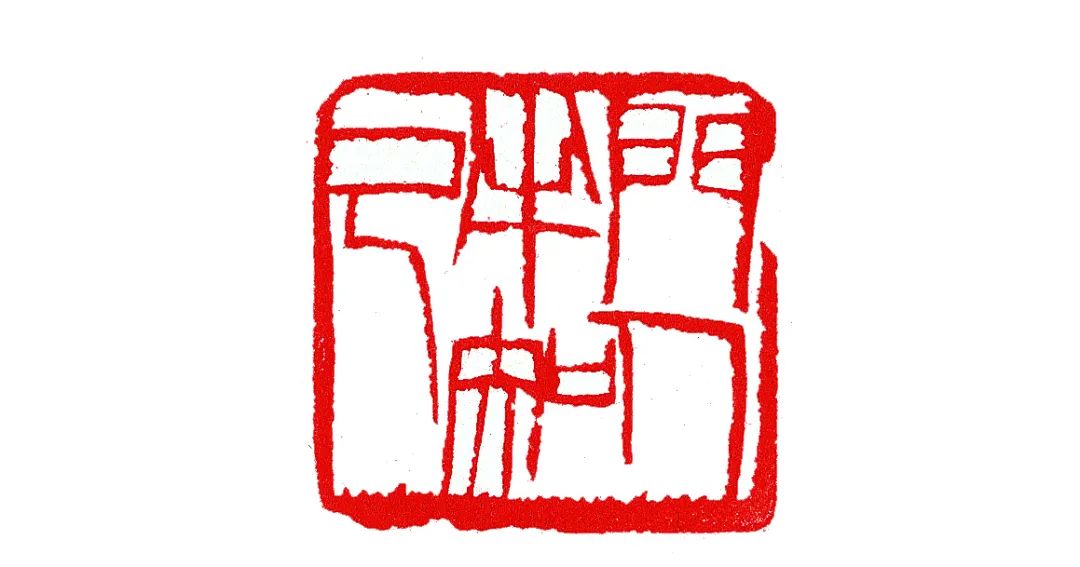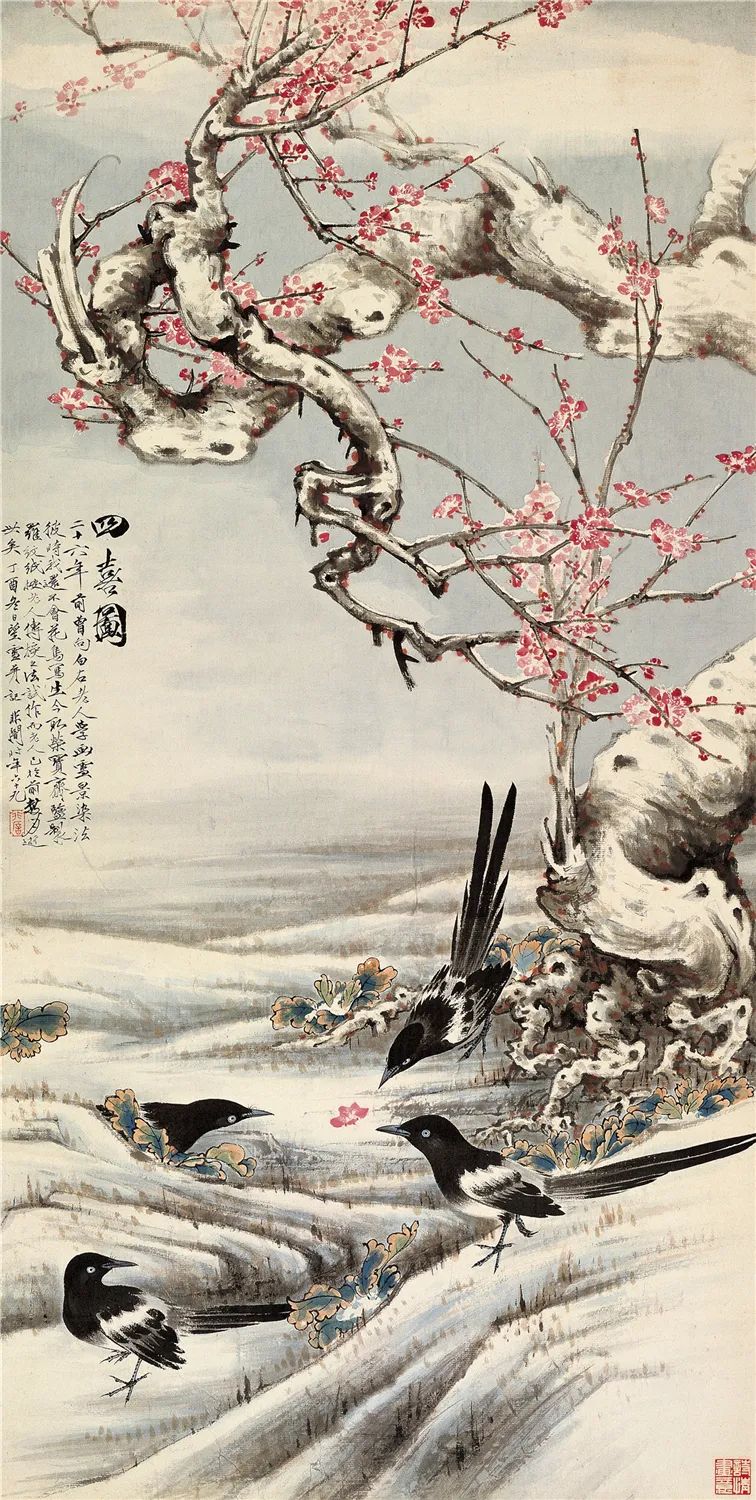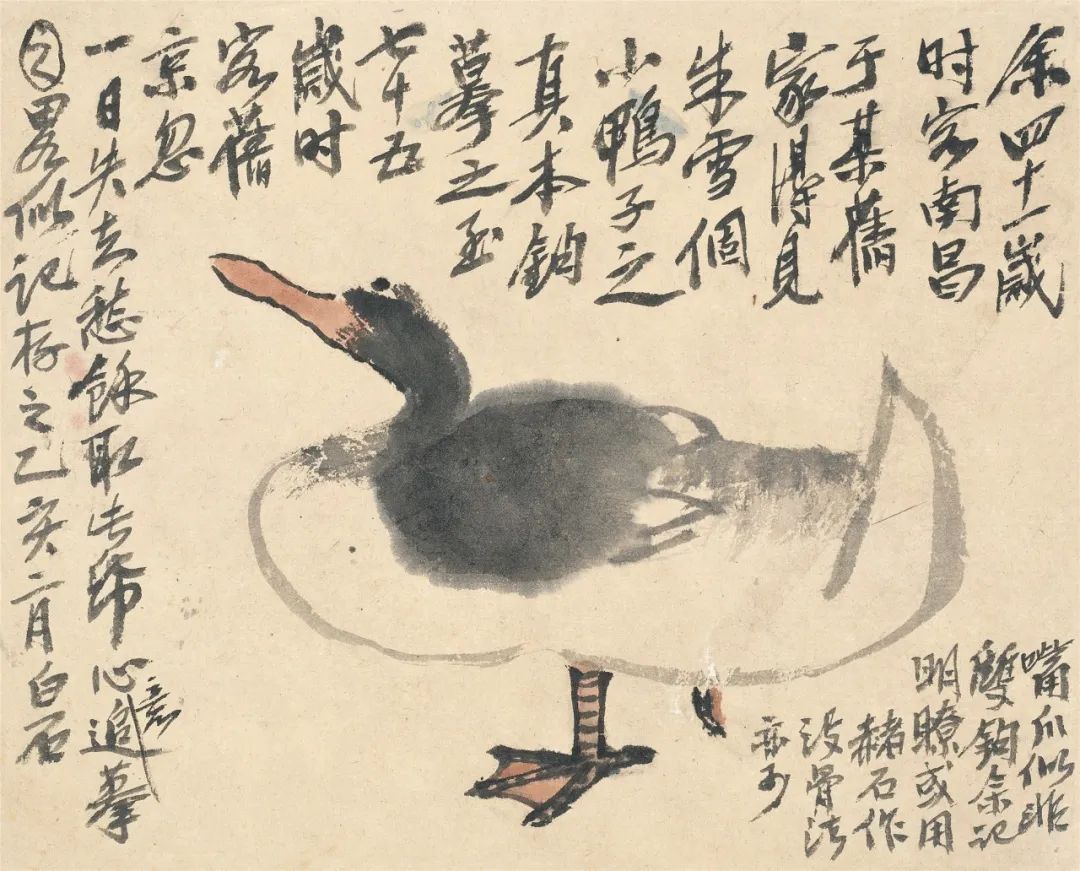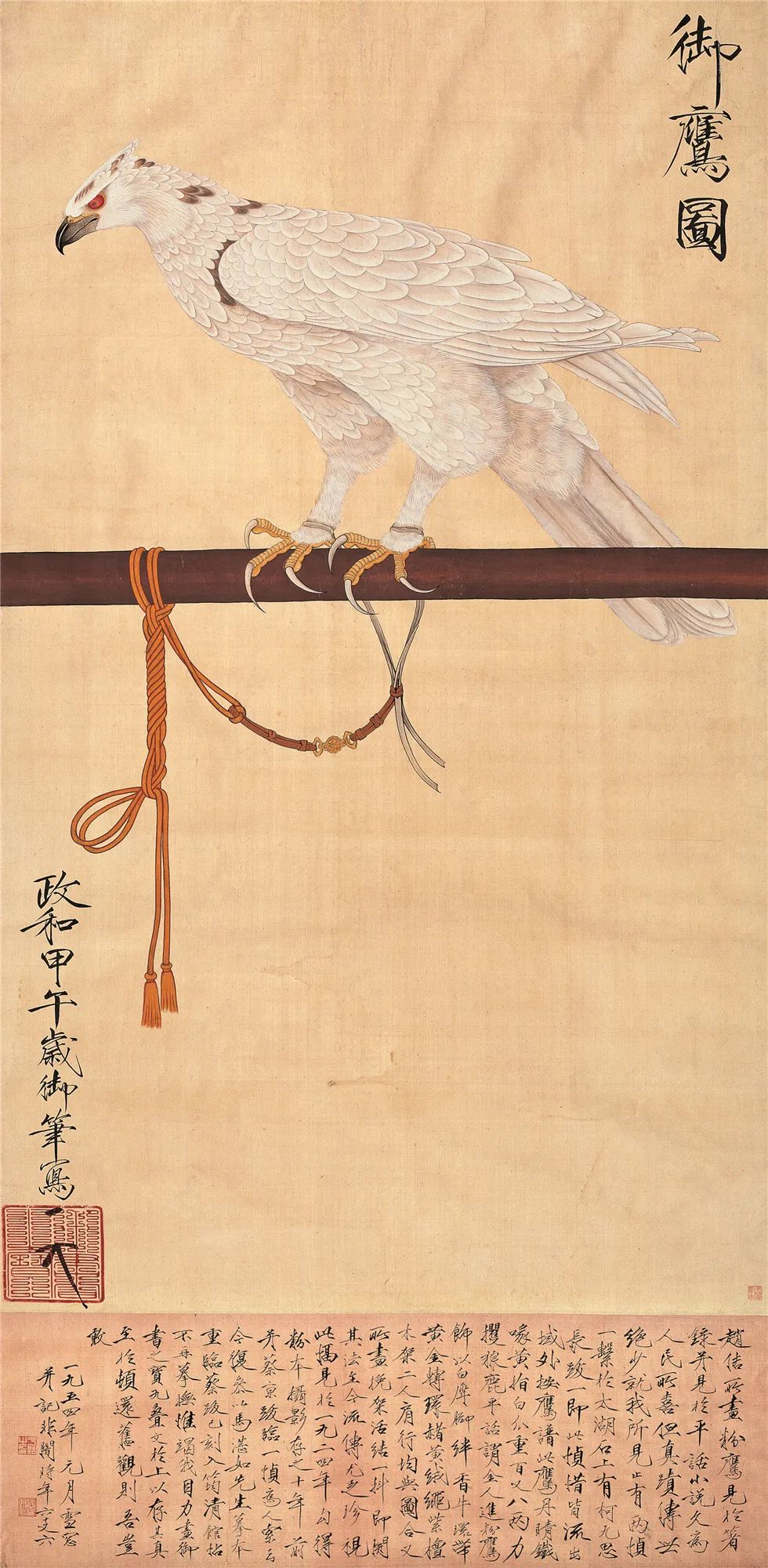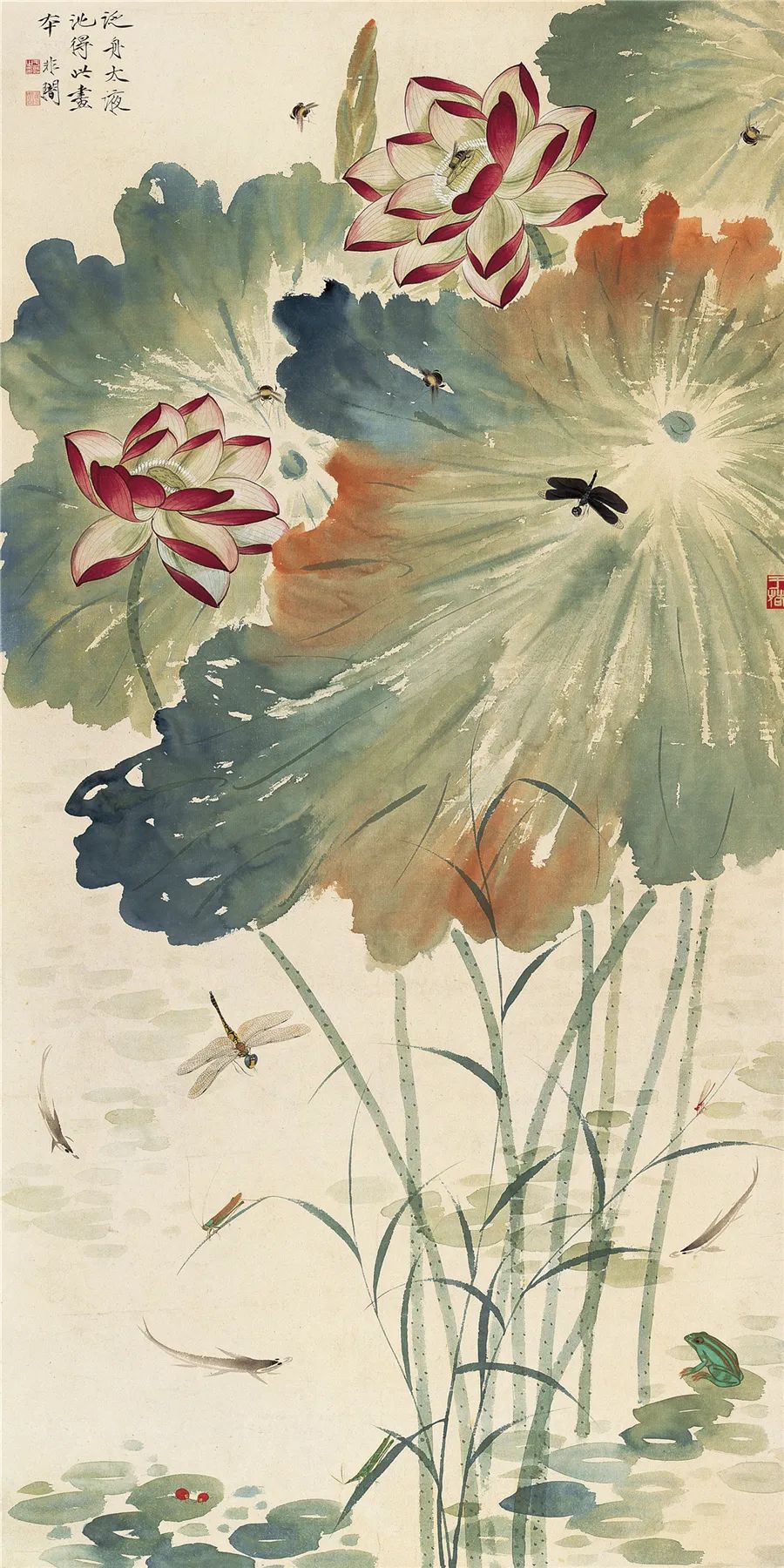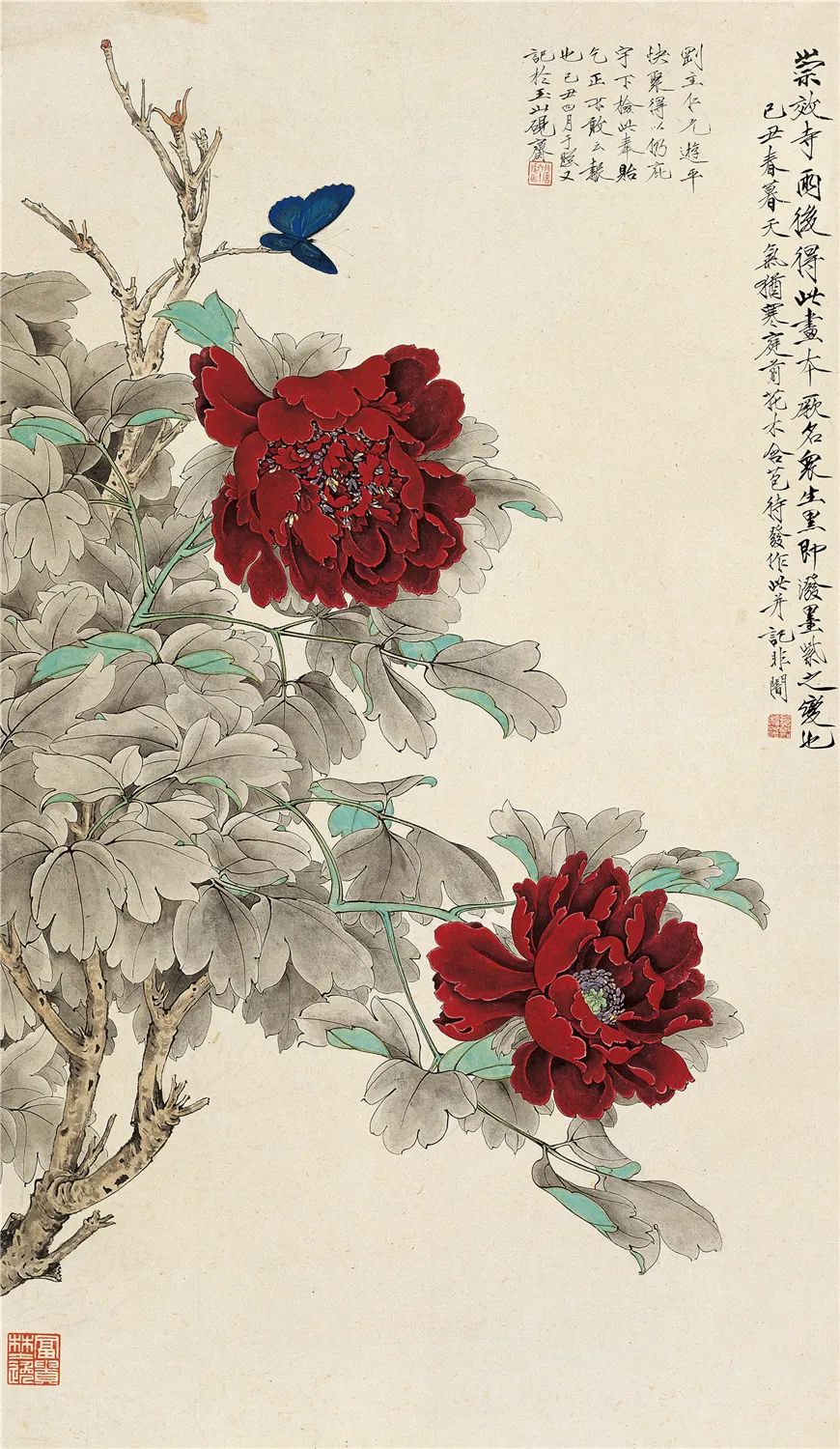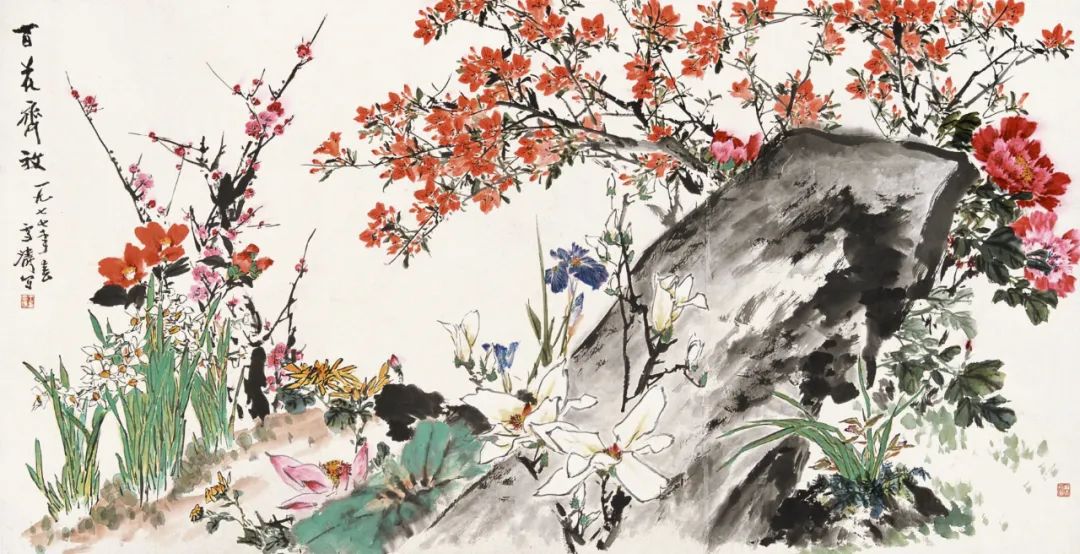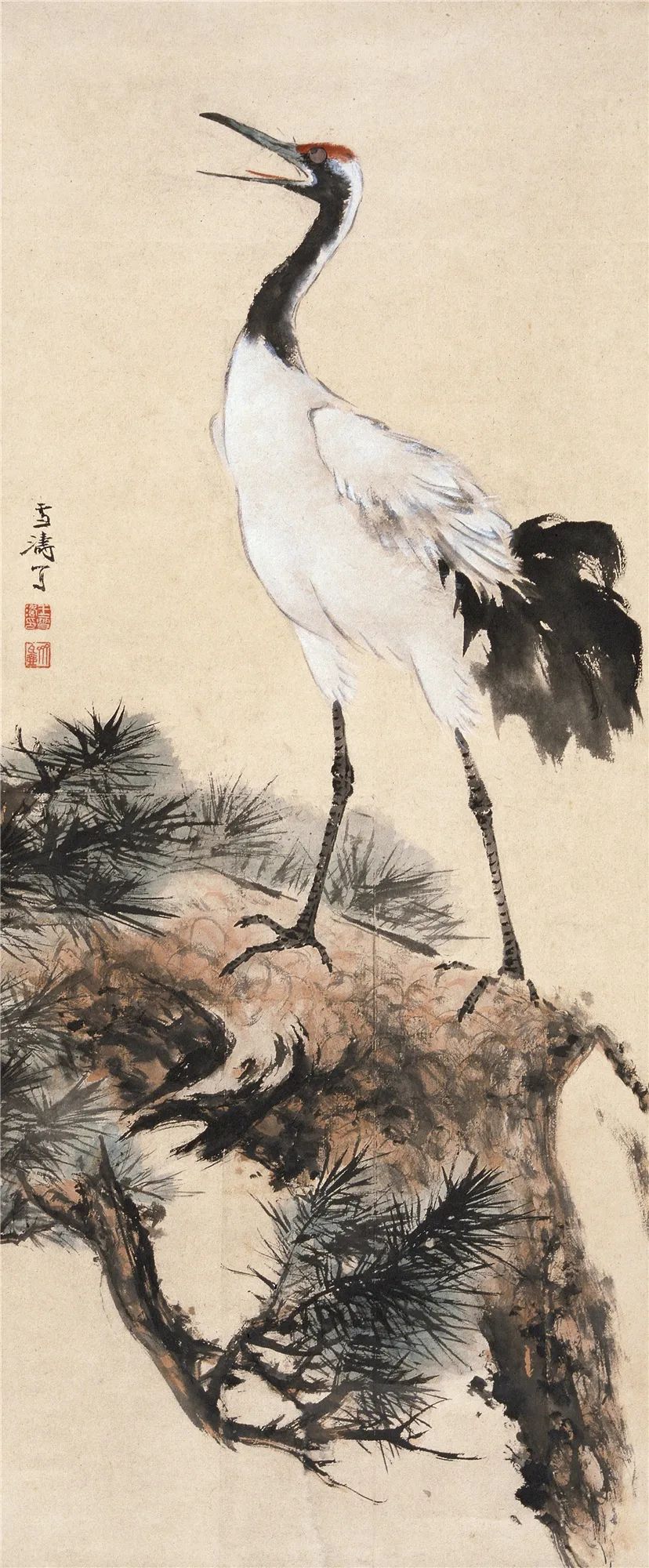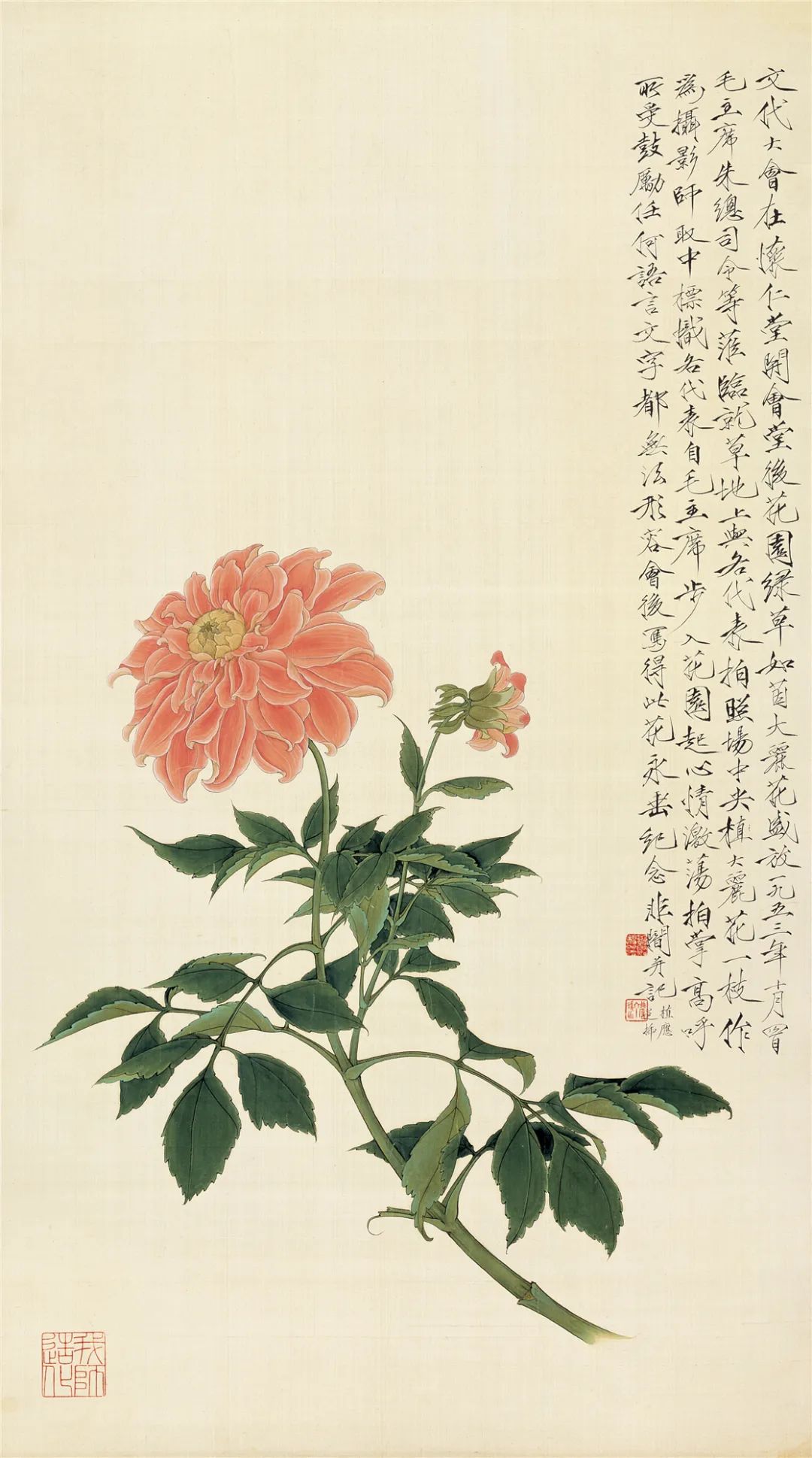Half the apprentices, half the confidants: Qi Baishi, Yu Feian and Wang Xuetao's new realm of bird-and-flower painting
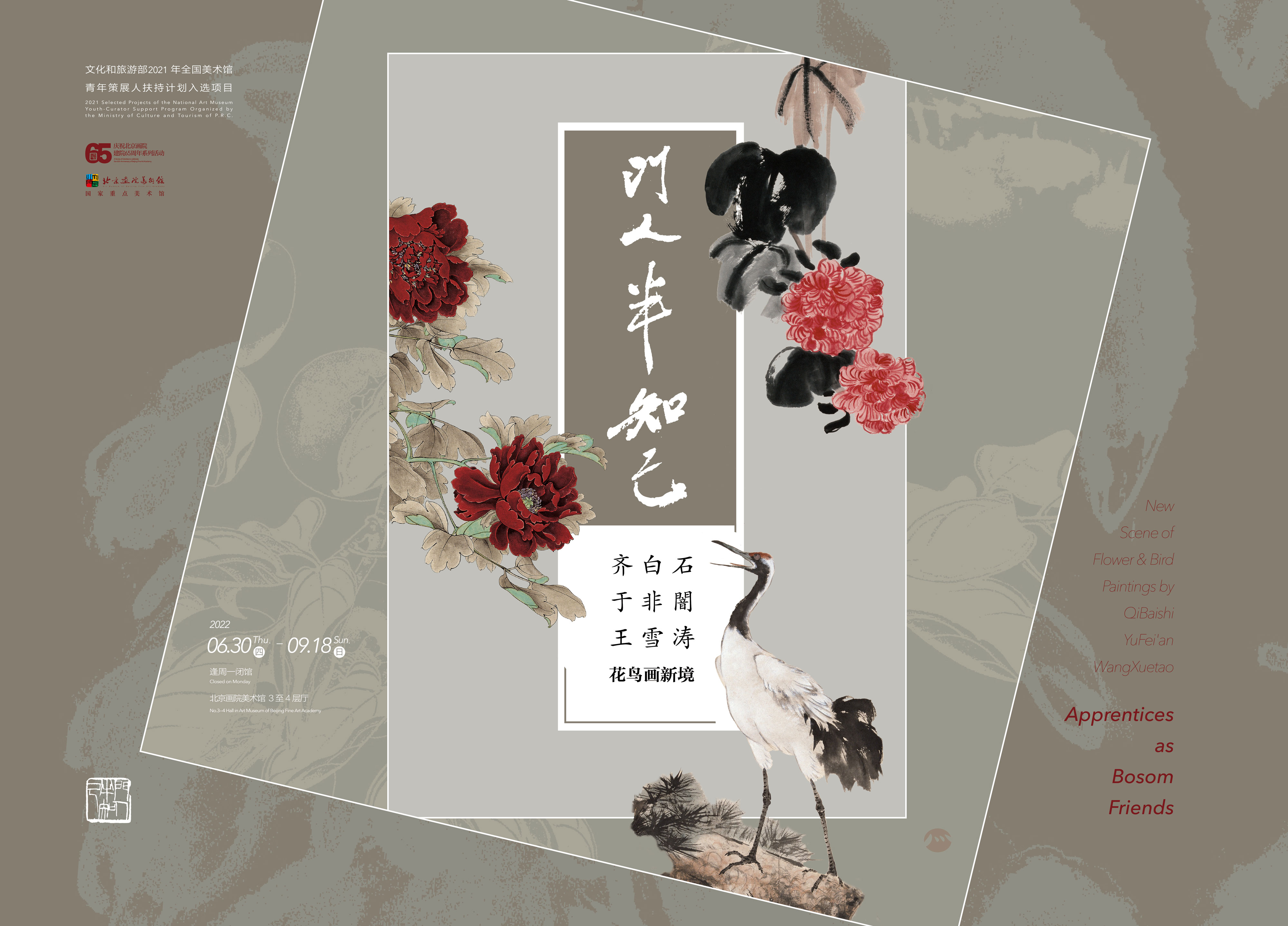
- show time:2022-06-30 to 2022-09-18
- Organizer:Beijing Fine Art Academy
- venue:Beijing Fine Art Academy
Curated by Beijing Fine Art Academy, the special exhibition Half the apprentices, half the confidants: Qi Baishi, Yu Feian and Wang Xuetao's new realm of bird-and-flower painting will open on 30 June at the Art Museum of Beijing Fine Art Academy.
Qi Baishi, Yu Feian and Wang Xuetao were all well known as masters of bird-and-flower painting in 20th century China. Although Qi Baishi was the mentor of Yu and Wang, and the three of them were all artists of Beijing Fine Art Academy, they have each taken their own artistic styles to new levels: Qi Baishi is known for his freehand brushwork with vivid color contrast; Yu Feian's gongbi technique is comparable to those artists of the Song Dynasty; Wang Xuetao has his place in the art world for his intricately detailed freehand brushwork in bird-and-flower painting. The exhibition will present more than 70 pieces of bird-and-flower paintings by Qi Baishi, Yu Feian and Wang Xuetao from the collection of the Beijing Fine Art Academy, offering the audiences a glimpse of the mainstream forms and classics of modern bird-and-flower painting. This exhibition was also successfully selected for "National art museum young curators support program 2021", which sponsored by Ministry of Culture and Tourism.
The exhibition takes bird-and-flower painting as the starting point, looks three different artists as a whole from the perspective of art tradition. It is divided into four sections, Following the mentor, Learning from the ancients, Feeling the nature and Speaking from the heart, to analyses why modern bird-and-flower painters have been able to open up new prospects in the new era.
Apprentices · Confidants
The title Half the apprentices, half the confidants comes from a seal that Qi Baishi carved for himself in his later years. He once sighed that "being a painter can be a lonely journey." Fortunately, he found a few close companions in his art journey. Qi Baishi treated his apprentices as confidants. The company of these confidants not only brought warmth to his long, lonely artistic career, but also created many anecdotes for the field of 20th century Chinese painting.
Traditional Chinese painting world follows the model of “mentor and apprentice.” The mentor not only teaches painting techniques, but also provides guidance in terms of cultural cultivation, personal behavior and even the realm of mind. Qi Baishi's mentor, Hu Qinyuan, opened the door to art for him. Qi Baishi was deeply grateful for Hu's kindness for the rest of his life. He carried on with the form of “mentor and apprentice”, teaching techniques, providing advice and treating his apprentices in the same sincere way.
Wang Xuetao's birth name was Wang Tingjun. In 1923, he and Li Kuchan apprenticed to Qi Baishi, and Qi Baishi gave him the name "Xuetao". In 1929, Yu Feian apprenticed to Qi Baishi, began to study landscape painting and seal carving with him. The three of them knew each other for more than ten years and were very close. In 1956, Beijing literature and art community came to celebrated Qi Baishi's birthday, and there is a photo of the event. Sitting in front of Qi Baishi is Wang Xuetao, one of his favorite apprentices.
In 1957, Yu Feian painted Four Happiness, recalling the time when he studied with Qi Baishi: “Twenty-six years ago, I learned to paint snow scenes from Baishi. At that time, I did not even know how to sketch flowers and birds. Now I am using the laid paper made by Rongbaozhai, painting as he had taught, but he has been gone for several months.”
Learning from the ancients · Feeling the nature
For traditional Chinese painters, learning and mastering the techniques of the ancients is the path to success, especially in the bird-and-flower painting category. Qi Baishi, Yu Feian and Wang Xuetao both stressed the importance of copying the masters. Qi Baishi had long been a faithful admirer of Xu Wei and Bada Shanren. Yu Feian often used a seal engraved with the words "A disciple of the ancients" in his early years, and adored Zhao Ji (Emperor Huizong of Song) throughout his life. Wang Xuetao knew the style of Bada Shanren by heart, and his brushwork reflects the essence of Bada Shanren's work. However, learning from the ancients does not mean being a shadow of the ancients. The point is to "understand the spirit" rather than seek physical likeness. As Qi Baishi said: "The work should reflect the subtle atmosphere of the ancients, not the superficial understanding of brushwork." The exhibition includes a work by Qi Baishi named Copying the duck of Bada Shanren again, which was painted when he was 75. The reason for this was that the one he had copied at the age of 41, Zhu Xuege's little duck, was lost. Qi Baishi felt so melancholy about this that he copied one again. Yu Feian also copied Zhao Ji's Training the eagle in his later years. This work, which Yu had sketched as early as 1924, was copied again in 1954, and it has a very similar poetry and taste of Zhao Ji. The continuous learning and absorbing of the ancients became the foundation of their own unique style.
"Feeling the nature" refers to the traditional Chinese painter's perception of nature. As a bird-and-flower painter, nothing but careful observation and profound understanding can make the birds and flowers under one's brush lifelike. "Sketching" is one of the most important methods of feeling nature. Qi Baishi, Yu Feian and Wang Xuetao all advocating this approach, but their ideas of sketching are different. Qi Baishi once said: "Those who are good at freehand art concentrate on their 'meaning', while those who skilled in sketching only focus on their 'image'. You should began with sketching, then seek the expression of sentiments, and then sketching again, so that you can have both 'meaning' and 'image' in your works. This cannot be achieved by coincidence." In this exhibition, we have set up several groups of Qi Baishi's sketches and paintings, which allow audiences to visually see the artistic transformation from sketching to final works.
Yu Feian argued that the Song and Yuan dynasties tradition of sketching should be restored. At the same time, he grew flowers, raised pigeons and visited gardens, brought his perception of everyday life into the sketches. Trained in western painting, Wang Xuetao is more rigorous and scientific in his sketching, and he painted more varieties of birds, insects and plants. The concept of "feeling the nature" and the insistence on sketching bring a vivid naturalness and vitality to these three artists' works.
Speaking from the heart · Opening up the new era
Bird-and-flower painting is not only an artistic re-creation of natural objects, but also an important way for artists to express their personal emotions and thoughts. In his later years, Qi Baishi lived in Beijing. He always felt homesick, hence the strong feelings of nostalgia that flow from his works. For example, Qi Baishi wrote an accompanying poem in his painting Pomelo: "There is no vacant land in my hometown, the hills are covered with oranges, pomelos and grapes. How can I get the magic whip that can move the mountains and rivers, allowing me to cross the Yellow River and return to lovely hometown?"
Yu Feian experienced the great changes that had taken place since the founding of the Peoples' Republic of China, and he brought his excitement into artworks, making the atmosphere of his bird-and-flower paintings more cheerful and bright. For example, in his 1959 work Peony with two doves, he chose objects such as “flowers in spring”, “leaves in summer” and “tree trunks in autumn”, the whole work shows a sense of exuberance and vitality.
Wang Xuetao's bird-and-flower paintings reflect mass aesthetic trend, seeking to express the vitality of the nature world. In his later years, both his creation state and emotional expression had reached a level of "a hundred flowers blossom".
Yu Feian and Wang Xuetao were not only Qi Baishi's confidants in art, but also inherited his concept of artistic innovation and his fearless courage. Although they chose three different art forms: freehand brush work, Gongbi and half freehand brush work, they both developed a 'new realm' of bird-and-flower painting in their eras, and also made traditional Chinese painting of 20th century full of vitality, just like the poem goes, "a hundred flowers blossom, bring spring to the garden".
The exhibition will run until 18 September.
